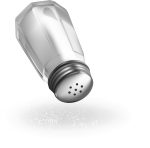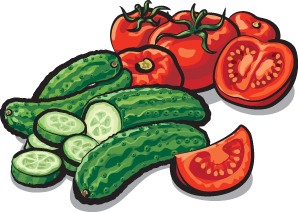Open for Discussion: Chemicals
By Brian Rohrig ∣ December 2014
Let’s face it: Chemicals have a bad reputation. Who would willingly expose themselves to chemicals? Aren’t chemicals smelly, nasty, and cancer-causing? Surely, if something contains chemicals, it must be bad, and bad for you, right? Chemicals are what you use in the chemistry lab, and everyone knows that you don’t even think about eating or drinking anything in the chemistry lab!
Matter = Chemicals
Some chemicals are bad for us, and some cause cancer. But we also use chemicals to treat cancer. Chemicals are nothing more than the elements, compounds and mixtures that make up the universe. The air we breathe, the water we drink and the food we eat are all made of chemicals. So are our bodies. A chemical can be thought of as any substance made of atoms. All matter is made of atoms, so all matter is composed of chemicals. You can always replace the word “chemical” with “substance.”
Chemicals are all around us! Above are examples of chemicals in common everyday products.
“Chemical-free”
A quick Internet search will reveal all sorts of “chemical-free” products, from sunscreens to vitamins. Unless these products contain a vacuum, the companies that sell them are all guilty of false advertising. In order to truly be “chemical-free,” a product would have to contain nothing at all! What about “natural” chemicals? Some of the most toxic substances in the world are produced naturally. Actually, a large number of animals produce toxic venom. They include spiders, scorpions, jellyfish and rattlesnakes. Just two-millionths of a gram of toxin from the brightly colored poison dart frog can kill a human! Global warming has been attributed to rising carbon dioxide levels in the atmosphere, yet there is no substance more “natural” than carbon dioxide!
Choose your chemicals wisely!
A chemical-free life is not possible. It may be better to ask how to avoid harmful chemicals and how to embrace beneficial ones. Get in the habit of reading the ingredient lists on product labels of products, and find out if any of these ingredients pose an unnecessary risk to your health. If so, consider switching to a different product—not one that contains no chemicals but one that has chemicals you can live with.





